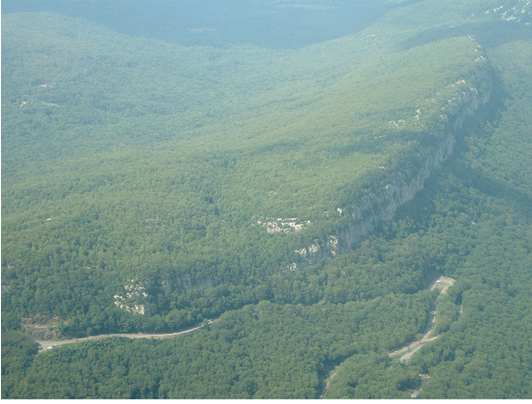 The Hudson Valley extends up into the hills and mountains that define the watershed. Over the past 13,000 years people have used the ridges in varied ways which archaeology is revealing to us.
The Hudson Valley extends up into the hills and mountains that define the watershed. Over the past 13,000 years people have used the ridges in varied ways which archaeology is revealing to us.
The prehistory of the Hudson Valley extends from approximately 13,000 years ago until the coming of the Dutch 400 years ago (Lindner 2011). Most research on this prehistory has focused on the valley lowlands, but I have become interested in the highland area, particularly the Shawangunk Ridge. We have looked at shelters all along the ridge and have prepared reports on Trapps Gap (Sando and Johnson in press) and on Ski Minne (Kaplan and Johnson in press).
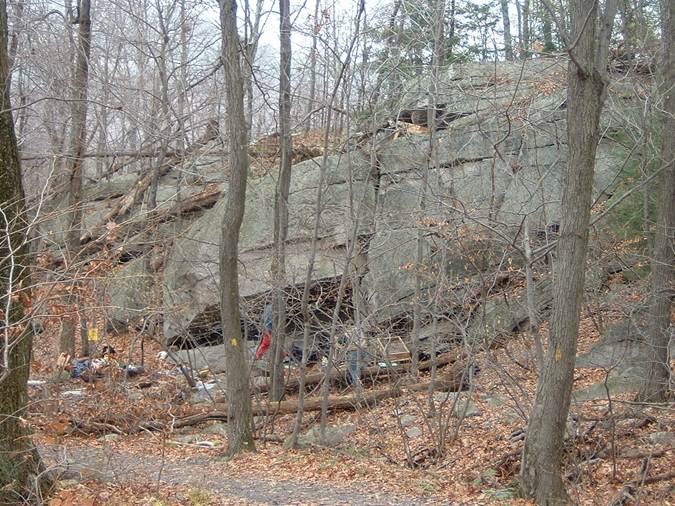
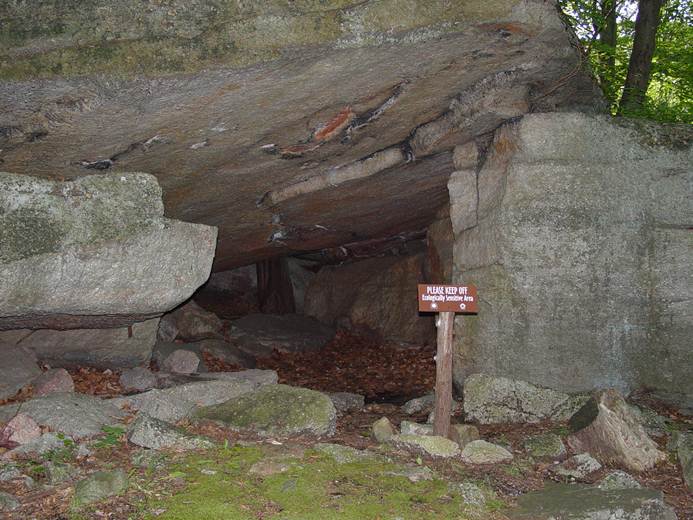
The questions of interest to us are why did the people live on, or visit the ridge, did they come at a particular time during the year, was the ridge used continuously throughout prehistory?
While our research is on-going, our results to date suggest that people, mainly men, used the ridge primarily for hunting in the fall and winter during the Archaic Period (10,000-3000 years ago) before they began to farm in the lowlands. The known exception to this pattern is the Trapps Gap Rock Shelter. The earliest remains from the ridge come from the Mohonk Rockshelter excavated by Leonard Eisenberg and his students from SUNY-New Paltz (Eisenberg 1991). 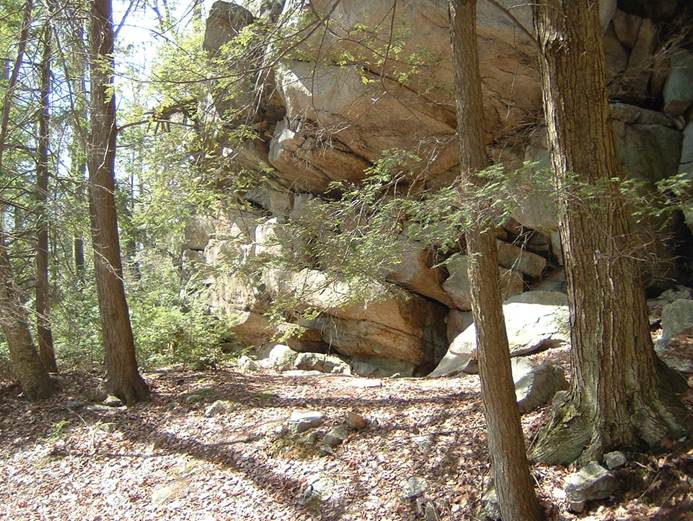
Here Eisenberg found possible Paleo-Indian projectile points, a significant Archaic occupation and a minor Woodland (1500-400 years ago; between 3000 and 1500 years ago there is a Transitional Period of low population in the Valley) presence marked by a few projectile points belonging to the period and the remains of one pottery vessel. Eisenberg was the first investigator to suggest that the ridge was occupied primarily by hunters, since the majority of the finds were hunting weapons (projectile points) and the debris from sharpening them, and that the occupation occurred during the fall and winter when deer moved to the ridge to find browse.
Our research at the Ski Minne Rockshelter, excavated by Eisenberg and his students and reanalyzed and published by my group, supports this model of use. Additionally, a comparison of the materials from the three shelters confirms use of the ridge primarily during the Archaic Period, with a significant decrease in diagnostic projectile points in the subsequent Woodland Period.
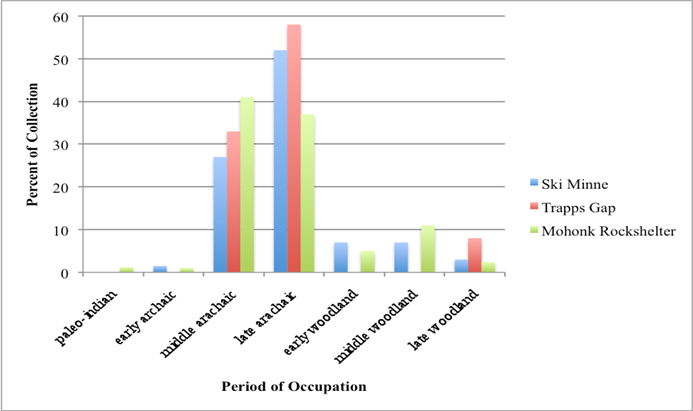
We believe that the reason for this is that once people began clearing the ground in the lowlands for farm fields, they created many edges between field and forest, ecotones where plants which are favored foods of deer proliferate. Hence, many deer stayed in the valleys during the winter, as did their hunters.
The exception to the pattern of hunting parties camping in ridge shelters is found at the Trapps Gap Shelter. Here, in addition to projectile points, we found evidence of at least 21 pottery vessels, suggesting the presence in the shelter of family groups of men, women and probably children. Trapps Gap is the major pass through the Shawangunks from the Hudson Valley to drainages to the west (it is where Rts. 44/55 pass through), and it is known to have been used since prehistoric times. Hence, it appears to have been occupied by groups of people traversing the ridge to visit friends and relations or trading partners or to attend ceremonies on the other side. By the time a family group, laden with provisions or goods for exchange, not to mention infants and toddlers, ascended to the top of the ridge, they rested for the night before attempting the descent down the other side.

We are continuing our research in order to verify these hypotheses and see if we can refine them further. Unfortunately many shelters on the ridge were excavated a long time ago, using methods that do not provide the detail of information we can acquire today, and others have been looted by artifact collectors. However, we continue to search for and investigate shelters that can tell us more.
References Cited
Eisenberg, Leonard 1991 The Mohonk Rockshelter: A Major Neville Site in New York State. In Essays in Honor of Louis A. Brennan, edited by Herbert C. Kraft, pp. 155-176. Occasional Publications in Northeastern Anthropology, No. 11.
Kaplan, Jessica and Lucille Lewis Johnson In press. The Ski Minne Rockshelter, Shawangunk Ridge, New York. The Bulletin of the New York State Archaeological Association
Lindner, Christopher R. 2011 The Earliest Thirteen Millennia of Cultural Adaptation along the Hudson Estuary. In Henshaw, Robert E., Environmental History of the Hudson River, pp. 65-76. Albany: SUNY Press.
Sando, Anne and Lucille Lewis Johnson In press The Upper Trapps Gap: two years of excavation at a prehistoric rockshelter. The Bulletin of the New York State Archaeological Association

